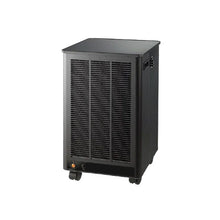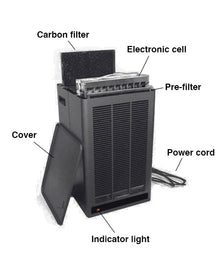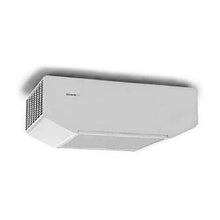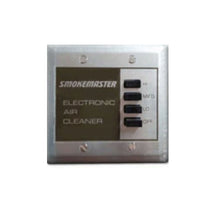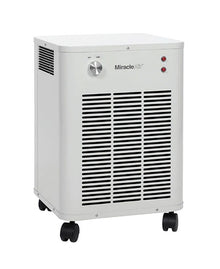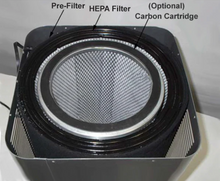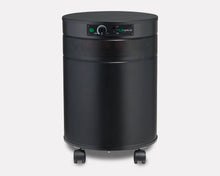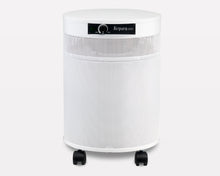The Complete Guide to Infection Prevention in Dental Practices: Evidence-Based Strategies for a Safer Environment
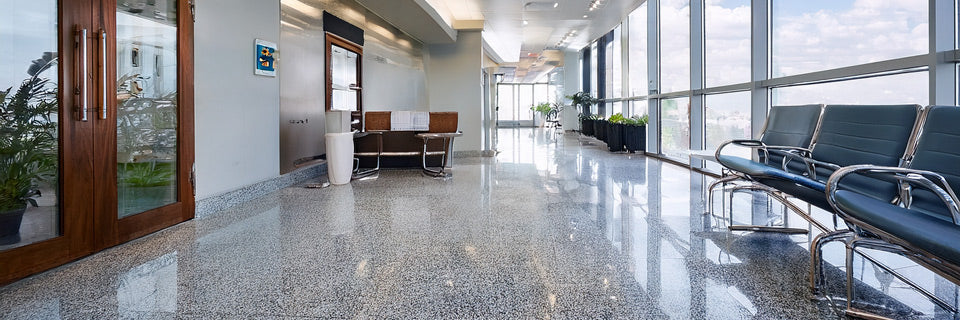
Every day, dental professionals face a unique challenge: providing excellent patient care while maintaining the highest standards of infection control. Unlike many healthcare settings, dental practices routinely generate aerosols and droplets that can carry microorganisms throughout the treatment environment. If you're feeling overwhelmed by the complexity of modern infection prevention protocols, you're not alone.
This comprehensive guide will walk you through evidence-based strategies that go beyond basic sanitation, giving you practical tools to create a safer environment for both patients and staff. You'll discover why traditional approaches may not be sufficient and learn about innovative solutions that address the invisible threats floating in your practice's air.
The Hidden Dangers in Your Dental Practice
The reality of dental practice is that every ultrasonic scaler, high-speed handpiece, and air-water syringe creates microscopic particles that can remain suspended in the air for extended periods. Most industrial hygiene professionals define aerosols as particles less than 50 microns, and these aerosolized particles are small enough they can float in the air for hours after a procedure ends.
Aerosols and droplets are produced during many dental procedures, creating what infection control experts call a "bioaerosol cloud" around the patient. This invisible threat carries more than just water – it contains saliva, blood, bacteria, viruses, and other microorganisms that can pose significant health risks.
Recent studies have shown that dental aerosols can travel much farther than previously thought. While traditional infection control focused primarily on direct contact and large droplet transmission, we now understand that airborne transmission plays a crucial role in dental practice safety. Most dental procedures involve the use of one or more devices that generate spatter and aerosol. The dental aerosols may carry water, saliva, mucous, microorganisms, making comprehensive air management essential.
The challenge becomes even more complex when you consider that different procedures generate varying levels of contamination. Routine cleanings produce different aerosol patterns than periodontal therapy or restorative procedures. Understanding these variations is crucial for developing effective prevention strategies.
Understanding the Science Behind Dental Aerosol Transmission
To effectively prevent illness in your practice, it's essential to understand how contamination occurs. Through the risk model analysis of airborne diseases, it is clarified that the key points of preventing aerosol transmission are infection source management, increasing ventilation, reducing exposure time and correct use of protective masks.
The Three Zones of Contamination
Dental aerosols create distinct contamination zones within your operatory:
Zone 1: The Immediate Treatment Area (0-2 feet from patient) This area receives the highest concentration of large particles and droplets. Traditional barriers like rubber dam isolation work well here, but cannot completely eliminate aerosol generation.
Zone 2: The Extended Operatory Space (2-6 feet from patient) Medium-sized particles settle in this zone, contaminating surfaces and equipment. Standard disinfection protocols address surface contamination, but airborne particles continue to circulate.
Zone 3: The Ambient Room Air (6+ feet from patient) The smallest particles remain suspended in this zone for extended periods, potentially affecting adjacent operatories and common areas. This is where many practices struggle with traditional infection control methods.
Duration and Viability of Airborne Contaminants
Research indicates that dental aerosols can remain viable in the air for 30 minutes to several hours, depending on particle size, humidity levels, and air circulation patterns. During this time, microorganisms can be inhaled by staff and subsequent patients, or settle on surfaces throughout the practice.
Comprehensive Infection Prevention Strategies
The Centers for Disease Control and Prevention emphasizes that basic infection prevention recommendations for all dental health care settings must be implemented systematically. However, truly effective prevention requires a multi-layered approach that addresses each potential transmission pathway.
Layer 1: Source Control and Patient Preparation
Pre-procedural Mouth Rinses Implementing antimicrobial mouth rinses before treatment can significantly reduce the microbial load in patient saliva. Studies suggest that chlorhexidine or hydrogen peroxide rinses can reduce bacterial counts in aerosols by up to 90%.
Rubber Dam Isolation When feasible, rubber dam isolation remains one of the most effective methods for reducing aerosol generation. While not applicable to all procedures, it should be used whenever possible for restorative work.
High-Volume Evacuation (HVE) Proper positioning and use of high-volume evacuation systems can capture a significant portion of aerosols at their source. Training staff on optimal HVE positioning is crucial for maximum effectiveness.
Layer 2: Personal Protective Equipment (PPE) Enhancement
The overall evidence suggests that the combined use of protective eyewear, masks (N95, FFP2 or air-fed), and face shields is effective in preventing contamination of the facial and nasal region.
Upgraded Respiratory Protection Standard surgical masks provide limited protection against small aerosol particles. N95 respirators or higher-level protection should be considered for aerosol-generating procedures.
Eye and Face Protection Full-face shields in combination with safety glasses provide comprehensive protection against splatter and aerosols. Regular cleaning and replacement protocols are essential.
Protective Clothing Long-sleeved gowns and covers for clothing reduce the risk of contamination that could be carried to other areas of the practice.
Layer 3: Environmental Controls and Air Management
Traditional surface disinfection addresses only part of the contamination challenge. The dental profession is mandated to sterilize instruments, disinfect surface contaminants, and use precaution protocols, but indoor air quality and aerosol management has not been addressed.
Enhanced Ventilation Systems Increasing air exchange rates can help dilute and remove airborne contaminants. The recommended minimum is 6 air changes per hour, but many practices benefit from higher rates during active treatment.
Air Filtration and Purification HEPA-grade filtration systems can capture particles as small as 0.3 microns with 99.97% efficiency. When properly positioned and maintained, air purification systems can significantly reduce the concentration of airborne pathogens.
Strategic Air Movement Creating directional airflow patterns that move contaminated air away from the breathing zones of staff and patients can reduce exposure risk. This requires careful planning of HVAC systems and supplemental air movement devices.
Layer 4: Scheduling and Workflow Modifications
Procedure Sequencing Scheduling high-aerosol procedures at the end of the day or with extended intervals between patients allows time for air clearance.
Room Recovery Time Implementing appropriate waiting periods between patients in the same operatory ensures that airborne contaminants have time to settle or be filtered from the air.
Staff Rotation Protocols Limiting individual exposure time to high-aerosol procedures through staff rotation can reduce cumulative exposure risks.
Advanced Technologies and Innovations
Ultraviolet Germicidal Irradiation (UVGI)
Upper-room UVGI systems can continuously disinfect air in occupied spaces by installing UV lights near the ceiling. This technology has shown effectiveness in reducing airborne pathogens in healthcare environments.
Photocatalytic Oxidation
Advanced air purification systems using photocatalytic oxidation can break down organic contaminants at a molecular level, providing continuous air treatment.
Real-Time Air Quality Monitoring
Modern monitoring systems can track particle counts, chemical contaminants, and microbial activity in real-time, allowing practices to adjust their protocols based on actual conditions rather than assumptions.
Implementing a Systematic Approach
Assessment and Planning Phase
Begin by conducting a comprehensive assessment of your current infection control practices. Identify gaps in coverage, particularly related to airborne contamination. Consider factors such as:
- Operatory layout and airflow patterns
- Types and frequency of aerosol-generating procedures
- Current PPE and environmental control measures
- Staff training and compliance levels
Equipment Selection and Installation
When selecting air management equipment, consider the specific needs of your practice:
Portable vs. Fixed Systems Portable air purifiers offer flexibility and can be moved to different operatories as needed. Fixed systems provide consistent coverage but require professional installation.
Capacity and Coverage Area Ensure that any air purification system can handle the air volume and contamination load of your specific space. Undersized systems provide inadequate protection.
Maintenance Requirements Regular filter replacement and system maintenance are crucial for continued effectiveness. Choose systems that provide clear maintenance indicators and accessible service.
Staff Training and Protocol Development
Comprehensive staff training is essential for successful implementation. Develop clear protocols that address:
- Proper PPE selection and use
- Equipment operation and maintenance
- Emergency procedures
- Documentation and quality assurance
Monitoring and Quality Assurance
Establish regular monitoring procedures to ensure continued effectiveness:
Air Quality Testing Periodic testing of air quality parameters can verify that your systems are working effectively.
Compliance Audits Regular audits of staff compliance with protocols help maintain high standards.
Patient and Staff Feedback Encouraging feedback from patients and staff can help identify areas for improvement.
Cost-Benefit Analysis and ROI Considerations
While implementing comprehensive infection prevention measures requires investment, the benefits extend far beyond regulatory compliance:
Reduced Illness and Absenteeism Healthier staff means fewer sick days and improved productivity.
Enhanced Patient Confidence Visible commitment to safety can improve patient satisfaction and retention.
Liability Risk Reduction Comprehensive infection control reduces exposure to potential legal issues.
Improved Practice Reputation Practices known for excellent safety standards often see increased referrals and positive reviews.
Frequently Asked Questions
Q: How long do aerosols remain in the air after dental procedures? A: Depending on particle size and air circulation, dental aerosols can remain suspended for 30 minutes to several hours. Smaller particles (under 5 microns) tend to stay airborne longer.
Q: Are N95 masks necessary for all dental procedures? A: While not required for all procedures, N95 or higher-level respiratory protection is recommended for aerosol-generating procedures, especially when treating patients with unknown infection status.
Q: How often should air purification systems be serviced? A: Filter replacement typically ranges from every 3-12 months depending on usage and environmental conditions. Systems should be professionally serviced annually.
Q: Can air purification replace other infection control measures? A: No, air purification should be part of a comprehensive approach that includes source control, PPE, surface disinfection, and proper procedural techniques.
Q: What's the most cost-effective way to improve air quality in my practice? A: Start with optimizing existing ventilation and implementing proper procedural techniques. Portable air purifiers can provide significant benefits at a lower initial cost than fixed systems.
Moving Forward: Creating Your Action Plan
Implementing comprehensive infection prevention doesn't happen overnight, but you can start making improvements immediately:
Week 1-2: Assessment Evaluate your current practices and identify the highest-priority areas for improvement.
Week 3-4: Quick Wins Implement low-cost improvements like enhanced PPE protocols and procedural modifications.
Month 2-3: Equipment Implementation Research and install air management systems that address your specific needs.
Month 4-6: Training and Optimization Provide comprehensive staff training and fine-tune your protocols based on real-world experience.
Ongoing: Monitoring and Improvement Establish regular review cycles to ensure continued effectiveness and identify opportunities for enhancement.
The path to comprehensive infection prevention may seem complex, but remember that every improvement you make contributes to a safer environment for everyone in your practice. By taking a systematic, evidence-based approach and leveraging both traditional methods and modern air management technologies, you can create a practice environment that exceeds safety standards while maintaining operational efficiency.
Your commitment to infection prevention demonstrates professionalism and care that patients notice and appreciate. In an era where health consciousness is at an all-time high, practices that go beyond minimum requirements position themselves as leaders in patient safety and care quality.
This article is based on current CDC guidelines and peer-reviewed research. Infection control protocols should be regularly updated as new guidance becomes available. Consult with infection control professionals and equipment manufacturers for specific recommendations tailored to your practice.

